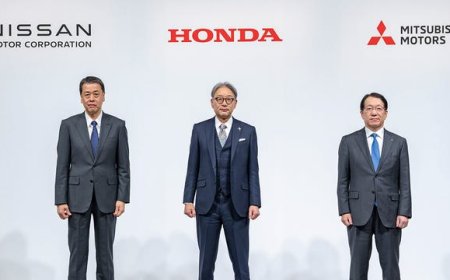Lotus reverses course, says it isn't ditching ICE engines completely
The iconic British carmaker is pivoting from its all-electric ambitions, committing to hybrid and extended-range technologies while retaining internal combustion engines for the future.

Lotus, the storied British automaker under Chinese ownership, has announced a dramatic shift in its electrification plans. While it initially aimed to phase out internal combustion engines (ICE) entirely by 2028, the company now says it will maintain ICE technology alongside hybrid and extended-range EVs (EREVs). The decision comes as demand for EVs softens, with many luxury performance car buyers remaining hesitant about fully electric vehicles. Lotus
CEO Feng Qingfeng confirmed the reversal at the Guangzhou Motor Show, emphasizing Lotus's goal to provide the “best power technology available,” whether it’s gasoline, hybrid, or electric. The new approach includes developing a "super hybrid" system combining turbocharged ICE engines with fast-charging battery technology, promising up to 680 miles of total range.
Related: Which states have the best—and worst—roads in the United States?
Why Lotus is keeping combustion alive
Luxury buyers have proven reluctant to give up internal combustion engines entirely, even in EV-focused markets like China. According to Qingfeng, EVs often struggle to differentiate themselves at the high end of the market. “Luxury car engines are already very powerful, and the driving experience is quite similar, with eight-cylinder and 12-cylinder engines performing well,” he said.
This switch comes after Lotus dismissed plug-in hybrids (PHEVs) in the past due to their compromised performance when running on depleted batteries. Now, the company plans to address those issues with a 900-volt electrical architecture that would recharge its batteries even faster than battery-swapping.
Related: Volkswagen workers plan December strikes over massive job cuts and pay freezes
The future of the Emira
One of the biggest beneficiaries of this strategic shift could be the Lotus Emira, the brand’s celebrated mid-engine sports car. Reports earlier this year signaled that the new-born model was already slated for discontinuation by 2027, but the Emira could now live on with a hybrid powertrain. Lotus
The Emira currently offers an AMG-sourced 2.0-liter turbocharged four-cylinder engine, the same base unit found in the hybrid Mercedes-AMG C63. Although the C63 is an entirely different vehicle with a lot more weight behind it, Lotus could leverage AMG’s hybrid technology and expertise to develop its own system, ensuring the Emira remains both competitive and compliant with upcoming regulations.
Additionally, plug-in hybrids (PHEVs) are exempt from European tariffs on Chinese-built EVs. While the Emira is manufactured in the U.K., shifting hybrid powertrain development to China could allow Lotus to benefit from these tariff exemptions. While a hybrid Emira might mean the end of its manual transmission and Toyota-sourced V6 engine, the car could gain a new chapter as a high-performance hybrid sports car.
Related: Ram’s first electric truck, the 1500 REV hits a roadblock Lotus
Final thoughts
Lotus’s decision to retain internal combustion engines alongside hybrid and electric powertrains reflects broader trends in the luxury automotive market. Customers still value the driving experience that an internal combustion engine provides, and Lotus aims to meet this demand without wholly abandoning its electrification aspirations.
This reversal offers hope for fans of Lotus’s traditional lightweight, performance-driven ethos. Whether it’s hybrid technology enhancing the Emira or entirely new models, this pivot could help the brand navigate a challenging and rapidly changing industry.











































